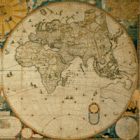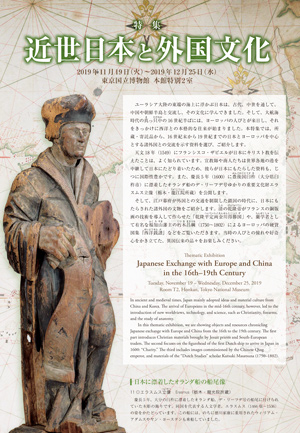Japanese Gallery (Honkan) Room T2
November 19, 2019 (Tue) - December 25, 2019 (Wed)
In ancient and medieval times, Japan mainly adopted ideas and material culture from China and Korea. The arrival of Europeans in the mid-16th century, however, led to the introduction of new worldviews, technology, and science, such as Christianity, firearms, and the study of anatomy.
In this thematic exhibition, we are showing objects and resources chronicling Japanese exchange with Europe and China from the 16th to the 19th century.
The first part introduces Christian materials brought by Jesuit priests and South-European traders. The second focuses on the figurehead of the first Dutch ship to arrive in Japan in 1600: "Charity." The third includes images commissioned by the Chinese Qing emperor, and materials of the "Dutch Studies" scholar Kutsuki Masatsuna (1750–1802).


